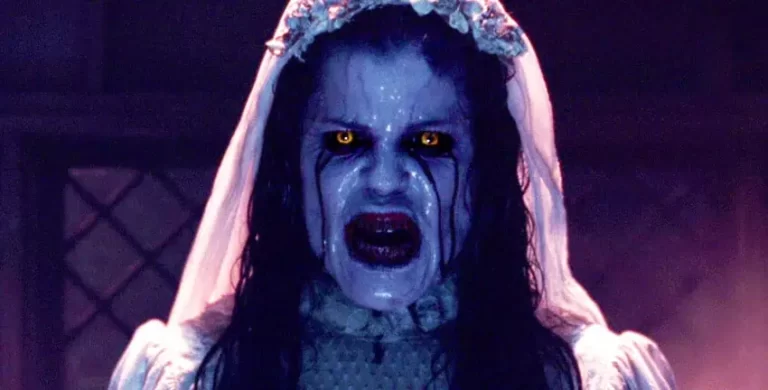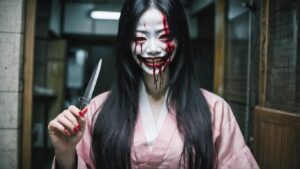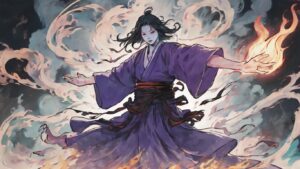Table of Contents
One popular version of the La Llorona legend tells the tale of a beautiful woman named Maria who fell in love with a man, and they had children together. However, the man eventually abandoned her, leaving her heartbroken and angry. In a fit of rage and despair, she drowned her own children in a river. Realizing the gravity of her actions, she was overcome with grief and remorse, wandering the streets weeping for her lost children. In some versions, she is cursed to roam the earth for eternity, searching for her drowned children.
According to the legend, La Llorona is often encountered near bodies of water, such as rivers or lakes, and her wails are said to be heard at night. Some versions of the story include warnings to children, cautioning them against staying out late or misbehaving, as La Llorona is sometimes depicted as a malevolent spirit who may harm or take away disobedient or wandering children.
The La Llorona legend has been passed down through generations and has become a significant part of the folklore in various Latin American countries, including Mexico, Central America, and parts of the southwestern United States. The story has also inspired numerous books, films, and other forms of popular culture.
Origin
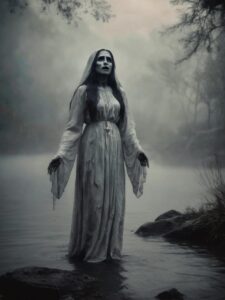
The origins of the La Llorona legend are not definitively traced to a single source, and the story has evolved over time through oral traditions and cultural variations. It is a folklore tale deeply rooted in Latin American culture, and different regions have contributed to the development of the legend.
Some theories suggest that elements of the La Llorona story have roots in pre-Columbian Mesoamerican mythology, where there were tales of weeping goddesses or spirits associated with water. Others believe that the legend has connections to Spanish colonial narratives and the blending of indigenous and European folklore.
In Mexico, one of the earliest written accounts of a similar tale can be found in the work of the 17th-century Mexican poet and historian Juan Ruiz de Alarcón. His play “La Llorona” explores a narrative with thematic similarities to the later iterations of the legend.
Over time, La Llorona has become a cultural archetype, with different regions adding their own twists and variations to the story. The legend serves various purposes, from cautionary tales for children to reflections on themes of love, betrayal, and the consequences of one’s actions.
Regardless of its specific origins, La Llorona remains a powerful and enduring figure in Latin American folklore, with her story continuing to be passed down through generations and adapted in various forms of literature, art, and popular culture.
Physical Description
The physical description of La Llorona can vary in different retellings of the legend, and it is not always consistent across regions and cultural adaptations. However, there are some common elements that appear in many versions of the story.
In general, La Llorona is often portrayed as a beautiful woman, sometimes described as ethereal or otherworldly in appearance. Her beauty is a notable aspect of the legend, as it often plays a role in the initial attraction of the man who becomes her lover or husband.
As for her attire, La Llorona is commonly depicted wearing a flowing white gown or robe. The white attire is often associated with mourning and reflects her perpetual grief over the loss of her children. The choice of white also contributes to the spectral or ghostly nature attributed to her.
Her long, dark hair is another characteristic feature, and it is sometimes portrayed as disheveled or flowing freely, emphasizing her distraught and tormented state. In some versions, her eyes are said to be red or bloodshot from constant weeping.
Since the La Llorona legend has evolved through oral traditions and diverse cultural interpretations, variations in her physical appearance may exist across different communities and storytellers. The key elements, however, usually revolve around her beauty, the white mourning attire, long dark hair, and her perpetual grief manifested through her haunting cries.
Personality

The personality of La Llorona is typically portrayed as a complex mix of love, betrayal, grief, and, in some versions, malevolence. While the specifics can vary, here are some common aspects of La Llorona’s personality as depicted in the legend:
Love and Betrayal: A central theme in many versions of the story is the intense love that La Llorona feels for her children and the subsequent betrayal by her lover or husband. The abandonment by the man she loves leads to a deep emotional turmoil that culminates in the tragic act of drowning her own children.
Grief and Remorse: After committing the terrible act, La Llorona is overcome with grief and remorse. Her perpetual weeping or wailing is often described as a manifestation of this intense sorrow. She is haunted by the consequences of her actions, and her mourning becomes a central element of the legend.
Restlessness and Wandering: As part of the curse or punishment associated with her actions, La Llorona is condemned to wander aimlessly, searching for her lost children. This wandering aspect is reflected in the various sightings of La Llorona near bodies of water, as she is said to roam near rivers or lakes.
Malevolent Nature (in some versions): In certain retellings, La Llorona is depicted as a malevolent spirit who may pose a threat to children, particularly those who misbehave or disobey their parents. This malevolence adds a cautionary element to the legend, with parents warning their children to behave or face the wrath of La Llorona.
Explanation of the Myth
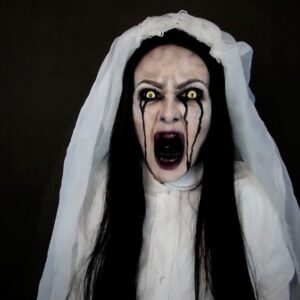
The La Llorona myth is a tragic and cautionary tale that has deep roots in Latin American folklore. While the details can vary, the central narrative typically revolves around a woman named Maria or another variant, who experiences a profound romantic betrayal, leading to a series of tragic events. Here is a general explanation of the myth:
Love and Betrayal: The story often begins with a beautiful woman, frequently named Maria, who falls deeply in love with a man. They may have children together, forming what seems to be a happy family. However, the man eventually betrays her, either by leaving her for another woman or abandoning the family for other reasons.
Act of Desperation: Overwhelmed by grief, anger, and a sense of hopelessness, the woman, in a fit of madness or despair, commits a heinous act. In most versions, she ends up drowning her own children. This act is usually portrayed as impulsive and fueled by intense emotions, such as heartbreak and rage.
Remorse and Grief: Realizing the gravity of her actions, the woman is consumed by overwhelming remorse and grief. Her sorrow is so profound that it leads to her own emotional and psychological torment. The cries and wails of her grief are said to be so powerful that they echo through the night.
Eternal Punishment: As a consequence of her actions, the woman is cursed to wander the earth for eternity, searching for her lost children. This wandering aspect often ties into sightings of La Llorona near bodies of water, where she is believed to be forever searching for her drowned offspring.
Cautionary Tale: The myth serves as a cautionary tale, warning children to behave and obey their parents, or else they may encounter the vengeful spirit of La Llorona. The story is often shared to emphasize the consequences of betrayal, the sanctity of family, and the importance of making responsible choices.
La Llorona myth is a powerful narrative that explores themes of love, betrayal, remorse, and the enduring consequences of one’s actions. It has become a significant part of the cultural heritage in many Latin American countries, passed down through generations as a cautionary and emotionally resonant tale.
Related similar creatures
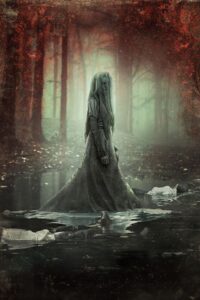
Related supernatural or mythical beings from various cultures around the world, each with its own unique characteristics and stories:
Pontianak (Southeast Asia): In Southeast Asian folklore, the Pontianak is a female vampiric ghost or spirit. It is said to be the spirit of a woman who died during childbirth or under tragic circumstances. The Pontianak is often associated with trees and is known for its eerie cries.
Yūrei (Japan): Yūrei are traditional Japanese ghosts or spirits, often depicted as women with long disheveled hair and white burial kimono. They are believed to be the spirits of individuals who have died under tragic or vengeful circumstances.
Churels (South Asia): In South Asian folklore, Churels are female spirits or demons who are said to arise from the spirits of women who died during childbirth, in childbirth, or under other tragic circumstances. They are often associated with revenge.
Dullahan (Ireland): The Dullahan is a headless horseman from Irish mythology. It is a harbinger of death and is said to carry its own head, holding it high to see across great distances. The Dullahan is often associated with the arrival of death.
Llorona de Mazatlán (Mexico): Another version of La Llorona, the Llorona de Mazatlán is a ghostly woman who is said to roam the beaches of Mazatlán, Mexico, searching for her lost children. Her story has similarities to the more widespread La Llorona legend.
Sedna (Inuit Mythology): Sedna is an Inuit sea goddess, often associated with marine animals. Her story involves betrayal by her father, resulting in her transformation into a sea deity. Sedna is seen as a powerful force and protector of marine life.
Mami Wata (West and Central Africa): Mami Wata is a water spirit or deity in African and Afro-Caribbean mythology. Often depicted as a mermaid or snake charmer, Mami Wata is associated with water, fertility, and healing.
Lamia (Greek Mythology): In Greek mythology, Lamia was originally a queen who suffered the loss of her children. Over time, she transformed into a child-devouring monster or demon. Lamia is sometimes associated with grief and vengeance.
These mythical beings and spirits reflect the rich diversity of cultural folklore around the world, each carrying its own set of beliefs, morals, and lessons.
FAQ
Who is La Llorona?
La Llorona is a legendary figure in Latin American folklore, a weeping woman said to haunt waterways.
What does La Llorona mean?
Translated from Spanish, La Llorona means "The Weeping Woman."
Why did La Llorona drown her kids?
In the legend, La Llorona is driven to madness by betrayal and drowns her children in a fit of despair.
How did La Llorona die?
The legend often doesn't specify how La Llorona died, as she is cursed to wander after drowning her children.
What does La Llorona do?
La Llorona is said to wander, weeping and searching for her lost children, often near bodies of water.
Where is La Llorona from?
La Llorona is part of Latin American folklore, with variations in different countries such as Mexico, Central America, and the southwestern United States.
What does La Llorona symbolize?
La Llorona symbolizes themes of maternal love, betrayal, grief, and the consequences of one's actions.
How old is La Llorona?
The character's age is not specified as she is a mythical figure, timeless in the context of folklore.
Why did La Llorona kill her sons?
La Llorona's actions are driven by intense grief and despair after being betrayed by her lover, leading her to drown her children.
What does La Llorona say?
The legend doesn't specify exact words, but La Llorona is often described weeping and crying out for her children.
What is the story of La Llorona?
The story involves a woman, often named Maria, who tragically loses her children and is cursed to wander, mourning eternally.
What does La Llorona tattoo mean?
A tattoo of La Llorona may symbolize themes of loss, grief, or a connection to Latin American folklore.
What does La Llorona look like?
La Llorona is often depicted as a beautiful woman in mourning, wearing a white gown, with long, dark, disheveled hair.
Where does La Llorona live?
She is said to roam various locations near water, such as rivers or lakes, depending on regional variations.
How to summon La Llorona?
There isn't a specific ritual for summoning La Llorona in traditional folklore; such notions may come from modern adaptations.
How to pronounce La Llorona?
La" is pronounced like the English word "lah," with a short "a" sound. "Llorona" is pronounced as "yoh-roh-nah."
The "ll" in "Llorona" is a unique sound in Spanish, often called a "yeísmo," which is similar to the "y" sound in the English word "yellow." So, you would pronounce "ll" like "y" in this case. The "o" is pronounced like the English "oh," and the "na" is pronounced with a short "a" sound, similar to the "na" in the English word "banana."
Where is La Llorona located?
In folklore, La Llorona is not confined to a specific location, as her wandering nature takes her to various places.
What is La Llorona's real name?
La Llorona is a mythical character, and her name is symbolic in the context of folklore; she doesn't have a "real" name.
